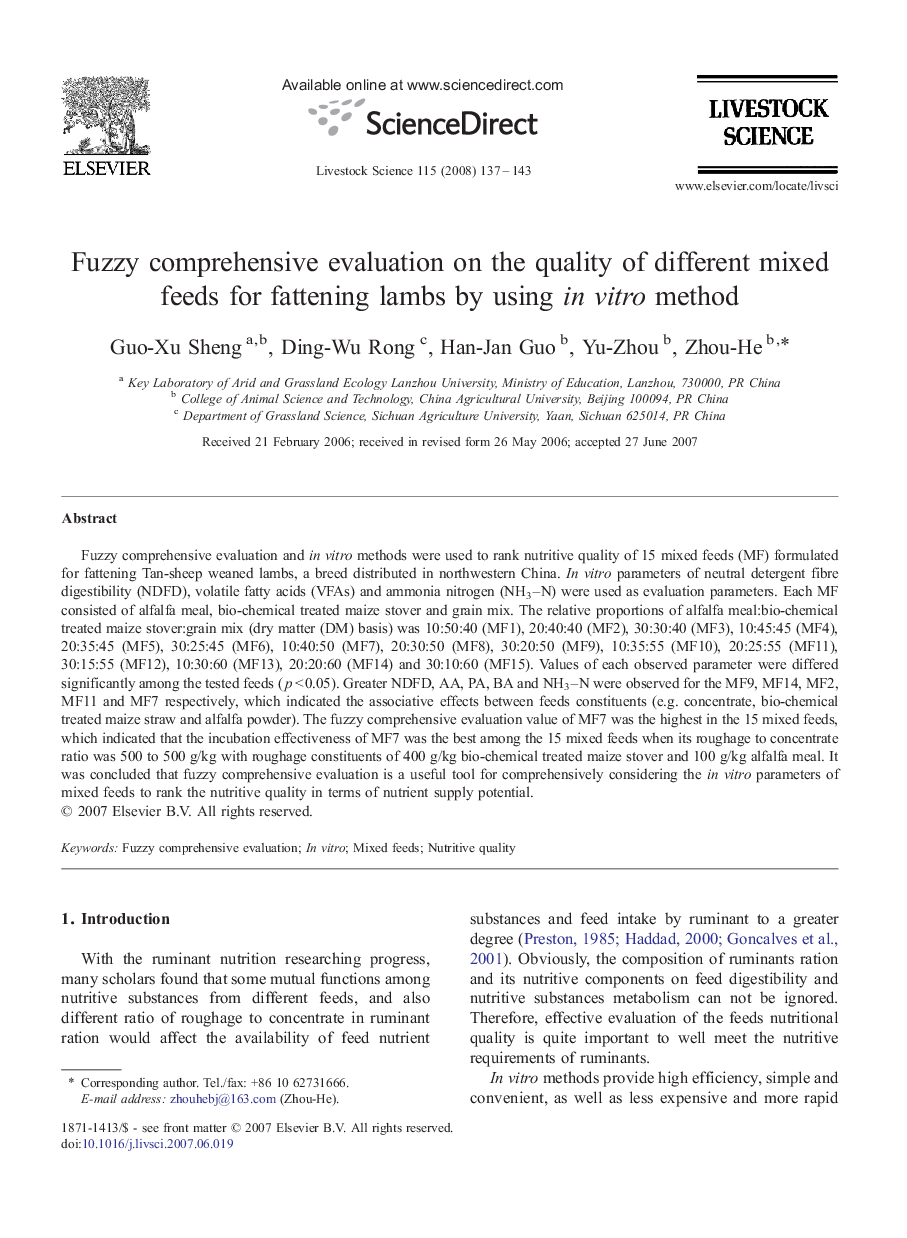| Article ID | Journal | Published Year | Pages | File Type |
|---|---|---|---|---|
| 2448493 | Livestock Science | 2008 | 7 Pages |
Fuzzy comprehensive evaluation and in vitro methods were used to rank nutritive quality of 15 mixed feeds (MF) formulated for fattening Tan-sheep weaned lambs, a breed distributed in northwestern China. In vitro parameters of neutral detergent fibre digestibility (NDFD), volatile fatty acids (VFAs) and ammonia nitrogen (NH3–N) were used as evaluation parameters. Each MF consisted of alfalfa meal, bio-chemical treated maize stover and grain mix. The relative proportions of alfalfa meal:bio-chemical treated maize stover:grain mix (dry matter (DM) basis) was 10:50:40 (MF1), 20:40:40 (MF2), 30:30:40 (MF3), 10:45:45 (MF4), 20:35:45 (MF5), 30:25:45 (MF6), 10:40:50 (MF7), 20:30:50 (MF8), 30:20:50 (MF9), 10:35:55 (MF10), 20:25:55 (MF11), 30:15:55 (MF12), 10:30:60 (MF13), 20:20:60 (MF14) and 30:10:60 (MF15). Values of each observed parameter were differed significantly among the tested feeds (p < 0.05). Greater NDFD, AA, PA, BA and NH3–N were observed for the MF9, MF14, MF2, MF11 and MF7 respectively, which indicated the associative effects between feeds constituents (e.g. concentrate, bio-chemical treated maize straw and alfalfa powder). The fuzzy comprehensive evaluation value of MF7 was the highest in the 15 mixed feeds, which indicated that the incubation effectiveness of MF7 was the best among the 15 mixed feeds when its roughage to concentrate ratio was 500 to 500 g/kg with roughage constituents of 400 g/kg bio-chemical treated maize stover and 100 g/kg alfalfa meal. It was concluded that fuzzy comprehensive evaluation is a useful tool for comprehensively considering the in vitro parameters of mixed feeds to rank the nutritive quality in terms of nutrient supply potential.
